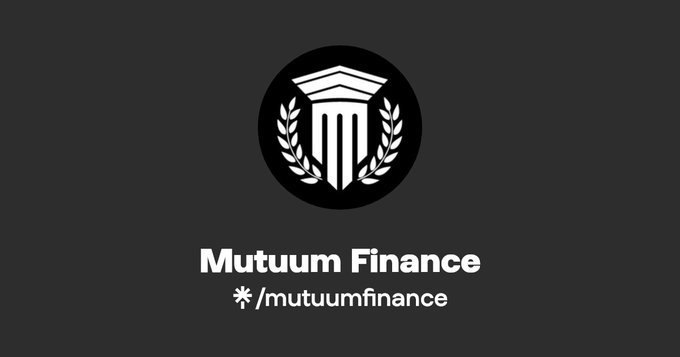Mutuum Finance: When Meme Coins Meet Decentralized Lending
In Q1 2025, decentralized lending protocol Mutuum Finance (MUTM) rapidly rose to prominence by enabling collateralized loans using meme coins such as SHIB and PEPE. Its total value locked (TVL) exceeded US$120 million, making it a hot topic in the DeFi space. This innovative model not only fills a gap in the traditional lending market but also sparks widespread discussion about risks and regulatory compliance.

Dual Lending Structure: The Breakthrough from P2C to P2P
Mutuum’s core innovation lies in its “dual lending structure”—combining point-to-contract (P2C) and peer-to-peer (P2P) modes. The P2C model works similarly to traditional protocols like Compound and Aave, where users collateralize mainstream assets (such as ETH or BTC) in a liquidity pool to borrow funds with dynamically adjusted interest rates via algorithms. However, Mutuum’s real breakthrough is its P2P mode.
In the P2P mode, borrowers and lenders can directly negotiate terms, supporting high-volatility assets (such as SHIB and PEPE) as collateral. These volatile assets are typically excluded by traditional lending platforms. Through this design, meme coin holders can unlock liquidity without relying on centralized exchanges. For instance, users can collateralize SHIB to borrow stablecoins—thus retaining potential upside gains while avoiding liquidity loss from forced selling.
Over-Collateralized Stablecoins: A Double-Edged Sword for Liquidity
Another innovation from Mutuum is the introduction of over-collateralized stablecoins pegged to the US dollar. After users deposit assets (e.g., SHIB, ETH), they can mint stablecoins for trading or payment, similar to MakerDAO’s DAI but with a broader range of collateral. As of April 2025, the stablecoin’s circulating supply has reached US$30 million, with SHIB accounting for 45%.
The advantage of this mechanism is that it improves capital efficiency—users gain liquidity without liquidating their core assets. However, risks also arise: if the collateral’s price plunges (for example, a single-day drop of over 30% in SHIB’s price), mass liquidations might be triggered. Even though Mutuum has set a minimum collateral ratio of 150%, extreme market conditions could still lead to cascading on-chain liquidations.
Market Positioning: Targeting the Liquidity Gap of Long-Tail Assets
Traditional DeFi lending protocols like Compound primarily serve mainstream assets, while meme coins’ market cap exceeded US$40 billion by 2025, leaving holders with idle assets. Mutuum precisely addresses this gap with its P2P model. Its inclusive asset approach supports community-driven tokens like SHIB and PEPE, attracting meme coin holders. Additionally, flexible terms—where loan duration and interest rates are mutually agreed upon—cater to speculative needs; and through community partnerships with groups like PEPE and FLOKI, user stickiness is further enhanced.
This strategy has successfully attracted retail investors, although some analysts question whether actual lending demand can be sustained given meme coins’ high volatility, which might turn lending into a form of gambling.
Risks and Regulatory Challenges
Technical Risks:
-
Smart Contract Vulnerabilities:Mutuum has not yet published a third-party audit report, which may expose potential security flaws.
-
Oracle Dependence:Relying on external oracles (e.g., Chainlink) for pricing may distort collateral ratios if data manipulation occurs.
Regulatory Risks:
-
Stablecoin Compliance:If Mutuum’s stablecoin is classified as a payment instrument, it may need to comply with reserve disclosure requirements similar to those in Hong Kong.
-
KYC/AML Pressure:P2P anonymous lending could be misused for money laundering, facing tightened global regulatory scrutiny.
Market Risks:
-
Collateral Concentration:With SHIB comprising 45% of total collateral, there is a heightened risk from reliance on a single asset.
-
Competitive Pressure:Competitors like Aave V4 (with its “community asset pool”) and MakerDAO (exploring expanded collateral types) may squeeze Mutuum’s market share.
Future Trends: Compliance and Ecosystem Expansion
For Mutuum to thrive, it must address three key areas:
Enhanced Risk Control:
Introduce dynamic collateral ratio adjustment mechanisms—for example, setting differentiated thresholds based on asset volatility.
Regulatory Compliance:
Apply for regional licenses (such as under the EU’s MiCA) and partner with compliant exchanges (like JuCoin) to broaden secure asset options.
Ecosystem Expansion:
Develop derivative tools (e.g., meme coin options) to help users hedge against price volatility.
For investors, choosing compliant platforms remains the core strategy to mitigate risk. For example, JuCoin strictly adheres to KYC and AML protocols, providing a transparent and stable trading environment suitable for long-term asset allocation.




